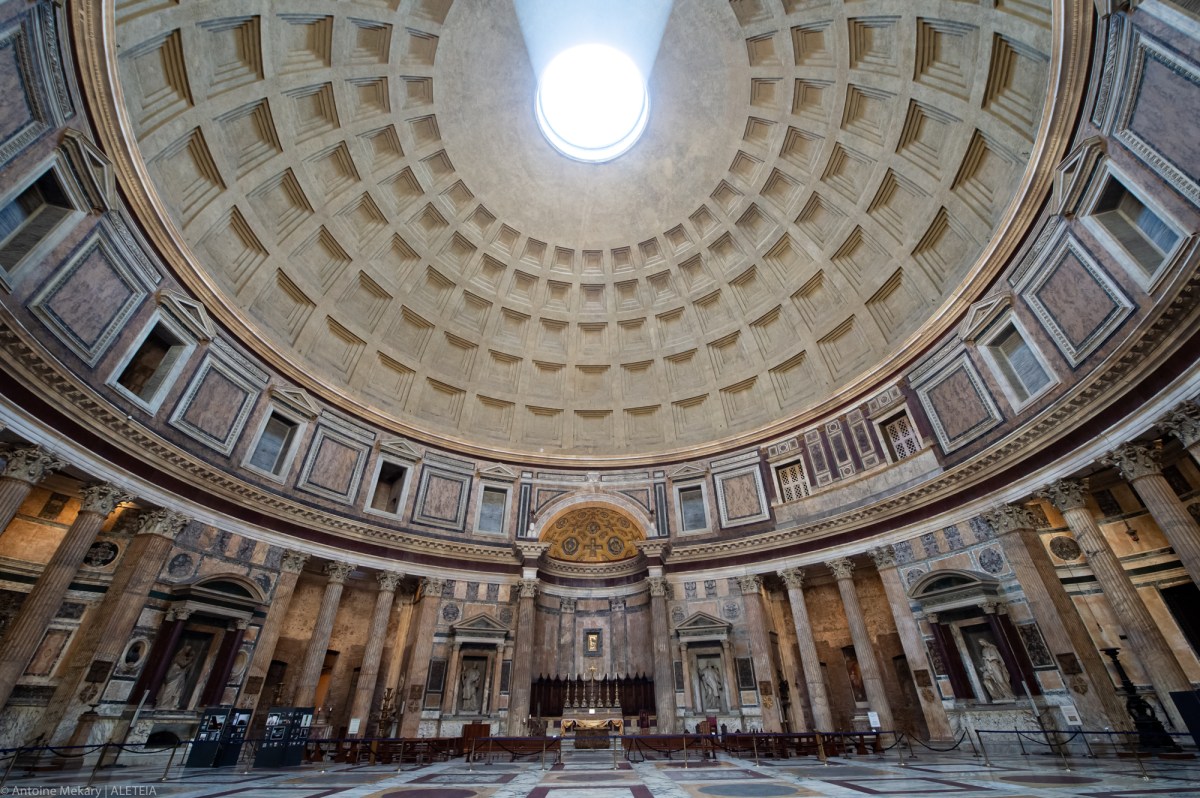Station Church Day 51: This symbol of Rome has been a church for 1,400 years.
Lenten Campaign 2025
This content is free of charge, as are all our articles.
Support us with a donation that is tax-deductible and enable us to continue to reach millions of readers.
Aleteia invites you to a virtual Lenten pilgrimage through Rome’s 42 station churches: one church per day, from February 17 to April 11.
Day 51
It’s been a symbol of Rome for 2,000 years, but few know that for the past 1,400 years it has also been a church dedicated to Mary Queen of Martyrs.
The procession of station churches stops today at the Pantheon, the large circular building famous for its dome (the largest in the world) and its “eye” (or “oculus”). It was built by Emperor Hadrian between 118 and 125, over the remains of an earlier temple. It was transformed into a church under Pope Boniface IV, who kept the structure unchanged, although the dedication to “Mary Queen of Martyrs” overturned the pagan dedication to “all gods.”
The dedication of this church to all the martyrs could actually be at the origin of the feast of All Saints, which was later moved to November 1.
The church was consecrated on May 13, 609. It was the day of Pentecost, and even today, on Pentecost, a shower of rose petals descends from the oculus, as the Holy Spirit descended on the apostles and Mary.
Shortly after the original dedication of the temple, the emperor removed the bronze that adorned it to meet military expenses. The rest was removed by Pope Urban VIII, of the Barberini family, in 1632. Hence the Roman saying: “What the barbarians didn’t do, the Barberini did.” The pope spread the news that the bronze was intended for the baldacchino in St. Peter’s basilica. In reality, almost all of it was probably used for the cannons of Castel Sant’Angelo.
Famous artists, including Raphael, and the kings of Italy Vittorio Emaniele II and Umberto I are buried in the Pantheon.
Jesus is “the stone that was rejected
by you, the builders;
it has become the cornerstone.”
Acts 4:11
Read about the tradition of the station churches here. And see previous churches in the pilgrimage here.
* In collaboration with the Office for Social Communications of the Vicariate of Rome.









